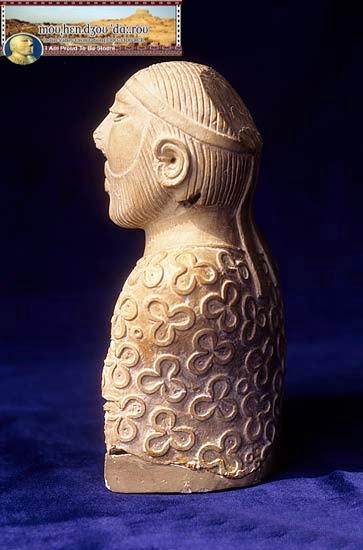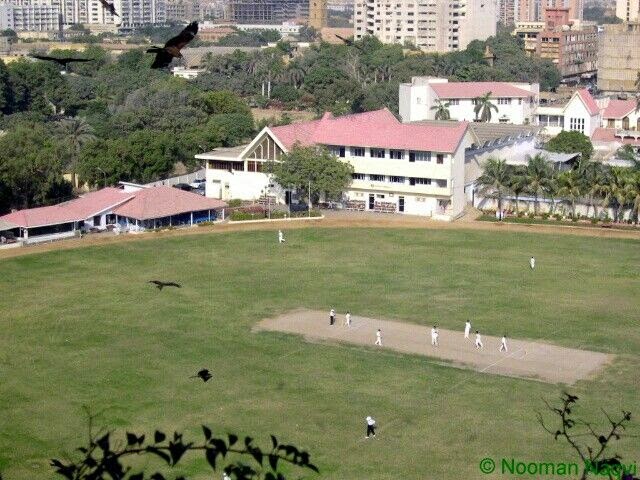I AM PROUD TO BE SINDHI
Wednesday, 8 February 2017
Wednesday, 27 April 2016
ڪراچيءَ ۾ جيل جي شروعات
ڪراچيءَ ۾ جيل جي شروعات
ڪراچيءَ ۾ چارلس نيپئر جي دور ۾ 1847ع ۾ شهر ۽ فوجي ڪئمپ جي وچ ۾ انهي جاءِ تي جتي اڄ سٽي ڪورٽ جي بلڊنگ آهي، جيل قائم ڪيوويو.ياد رهي ته هاڻوڪي سول هسپتال واري جاءِ تي انگريزن جي قبضي وقت کالي ميدان هو. ڪراچيءَ تي قبضي جي ٻئي ڏينهن منهوڙي کان ايندڙ انگريز فوجي انهيءَ خالي ميدان تي ڪيمپ لڳائي رهڻ لڳا هئا ۽ هي علائقو فوجي ڪئمپ ۾ تبديل ٿيو.
50 سالن تائين ڪراچي ڊسٽرڪ جيل جاءِ هتي ئي رهي. پهرين هي هڪ سادي جاءِ ۾ هئي، بعد ۾ 1858ع ۾ پبلڪ ورڪس ڊپارٽمنٽ ساڍن ڏهن ايڪڙن تي 112412 رپين جي خرچ سان نئين بلڊنگ تيار ڪئي. 1868ع ۾ هن کي وڌايو ويو.قيدن کي رکڻ جي گنجائس 800 تائين هئي جنهن ۾ قيدن لاءِ کوليون، ورڪشاپ نه ٺهيل هئا.
شهر جي وچ ۾ اچڻ ڪري جيل کي هاڻوڪي ڪرچي سنٽرل جيل واري جاءِ تي منتڪل ڪيو ويو. جيل واري جاءِ تي چراھه گاهه هوندو هو،سبزي منڊي واري جاءِ ۽ لياري نديءَ ڪناري ڳوٺ هئا. پنهورن جو ڳوٺ اڄ به جيل پويان موجود آهي. 8 اپريل 1899 ۾ جيل جي عمارت کي مڪمل ڪيو ويو،جيڪو 11000 چورس تي ٻڌل آهي. شروع ۾ هڪ هزار قيدين کي رکڻ جي گنجائش هئي،هن وقت جيل ۾ رکڻ جي گنجائش 3000 هزار آهي.پر قيدي 4000 هزار کان مٿي آهن. پهرين جيل سپرنٽينڊينٽ مسٽر ڊي سولومن هو. جيل ۾ قيدين کي مصروف رکڻ لاءِ 1928ع ۾ هڪ فيڪٽري به اڏي وئي، هن کان سواءِ جيل جي ڪجھ حصي تي زراعت به ڪئي ويندي هئي. جتي قيدين لاءِ سبزيون وغيره پوکيون وينديون هيون. هاڻي اها فيڪٽري تباهه ٿي وئي آهي ۽ ِِزرعي ايراضي جي ڪجه ڀاڱي تي نوان وارڊ اڏيا ويا آهن. جيل ۾ هڪ اسڪول به آهي جتي قيدين جا ٻارتعليم حاصل ڪن ٿا.جيل ۾ جيل سپرنٽينڊينٽ لاءِدفتر، رهڻ جي جاءِ ۽ ٻين سپائين لاءِ رهڻ جون جائيون موجود آهن. 1899ع ۾ هن جي اڏاوٽ تي3،57000 خرچ ٿيا هئا.
ورهاڱي کان پو۽ 1974ع ۾ نيشنل هاءِ وي تي لانڊي واري علائقي ۾ لانڊي جيل اڏيو ويو. جتي ٻارن جو جيل به آهي. جڏهن ملير ضلعو ٺيو ته هن جو نالو ڊسٽرڪ جيل ملير ايٽ لانڊي رکيو ويو هن ۾ قيدين کي رکڻ جي گنجائش 893 آهي. پرهن وقت جيل ۾ 3000 قيدي آهن. عورتن جي جيل ۾ قيدين جي گنجائش 102 آهي. پر قيدي 126 آهن ۽ ٻارن واري جيل ۾ قيدين جي گنجائش 350 آهي ۽ قيدي 589 آهن.(سرڪاري رپورٽ 2006ع)
Thursday, 5 February 2015
Great Bath of Mohenjo-Daro 3300 - 1300 BCE
Great Bath and Granary, SD Area
|
Great Bath, SD Area, looking north
The Great Bath was entered using two wide staircases, one from the north and
one from the south. The floor of the tank is watertight due to finely fitted bricks
laid on edge with gypsum plaster. Brick colonnades were discovered on the eastern,
northern and southern edges, but the western edge (at the left) was missing.
Sir John Marshall assumed that they would have been present and subsequent
reconstructions have replaced these missing columns.
|
At the foot of the stairs is a small ledge with a brick edging that extends the
entire width of the pool. People coming down the stairs could move along
this ledge without actually stepping into the pool itself. Small sockets at the
edges of the stairs could have held wooden planks or treads.
entire width of the pool. People coming down the stairs could move along
this ledge without actually stepping into the pool itself. Small sockets at the
edges of the stairs could have held wooden planks or treads.
|
|
Tuesday, 3 February 2015
Priest King
Seated male sculpture, or "Priest King" from Mohenjo-daro (41, 42, 43). Fillet or ribbon headband with circular inlay ornament on the forehead and similar but smaller ornament on the right upper arm. The two ends of the fillet fall along the back and though the hair is carefully combed towards the back of the head, no bun is present. The flat back of the head may have held a separately carved bun as is traditional on the other seated figures, or it could have held a more elaborate horn and plumed headdress.
Two holes beneath the highly stylized ears suggest that a necklace or other head ornament was attached to the sculpture. The left shoulder is covered with a cloak decorated with trefoil, double circle and single circle designs that were originally filled with red pigment. Drill holes in the center of each circle indicate they were made with a specialized drill and then touched up with a chisel. Eyes are deeply incised and may have held inlay. The upper lip is shaved and a short combed beard frames the face. The large crack in the face is the result of weathering or it may be due to original firing of this object.
Material: white, low fired steatite
Dimensions: 17.5 cm height, 11 cm width
Mohenjo-daro, DK 1909
National Museum, Karachi, 50.852
Marshall 1931: 356-7, pl. XCVIII
Two holes beneath the highly stylized ears suggest that a necklace or other head ornament was attached to the sculpture. The left shoulder is covered with a cloak decorated with trefoil, double circle and single circle designs that were originally filled with red pigment. Drill holes in the center of each circle indicate they were made with a specialized drill and then touched up with a chisel. Eyes are deeply incised and may have held inlay. The upper lip is shaved and a short combed beard frames the face. The large crack in the face is the result of weathering or it may be due to original firing of this object.
Material: white, low fired steatite
Dimensions: 17.5 cm height, 11 cm width
Mohenjo-daro, DK 1909
National Museum, Karachi, 50.852
Marshall 1931: 356-7, pl. XCVIII
Sunday, 4 January 2015
Karachi Gymkhana
Karachi Gymkhana Club in 1890.
The Karachi Gymkhana (KG) is a premier gymkhana (sports club) in the city of Karachi. It is located on Club Road in Karachi, Sindh, Pakistan.
History
The club was founded in 1886.It is one of the oldest gymkhanas in Pakistan.
Membership
Over 9000 members are enrolled in the club.Karachi Gymkhana is one of the largest clubs in Asia, in terms of membership and sports facilities.
Facilities
The KG Club provides various sports and games facilities for its members. The club has a main building with a restaurant, snooker room, cafe and prayer room. There is a separate sports building and a cricket ground. There are tennis and squash courts as well. Most sports activities have coaches for newcomers. One has to pay for coaching services and membership is necessary to enroll in coaching courses. Every year there is an annual sports festival in which members and their children take part in various sports events on the cricket ground. There are regular tournaments for squash, swimming, cricket, table tennis and tennis. There are three types of swimming pools. One is the main pool for experienced swimmers, and there is one for learners. There is also one for younger children and toddlers. The Karachi Gymkhana cricket ground has been home to many famous matches as well. Famous cricketers such as Imran Khan have played on the cricket ground.
click this web pic
Sunday, 23 November 2014
راجيش رائو موهن جي دڙي واري لکت کي کولي ٿو
Tuesday, 18 November 2014
Priest-King
Priest-King
In 1927, a seated male soapstone figure was found in a building with unusually ornamental brickwork and a wall-niche. Though there is no evidence that priests or monarchs ruled Mohenjo-daro, archeologists dubbed this dignified figure a "Priest-King." The sculpture is 17.5 centimetres (6.9 in) tall and depicts a bearded man with a fillet around his head, an armband, and a cloak decorated with trefoil patterns that were originally filled with red pigment. The two ends of the fillet fall along the back. The hair is carefully combed towards the back of the head but no bun is present. The flat back of the head may have held a separately carved bun, or it could have held a more elaborate horn and plumed headdress. Two holes beneath the highly stylized ears suggest that a necklace or other head ornament was attached to the sculpture. The left shoulder is covered with a cloak decorated with trefoil, double circle and single circle designs that were originally filled with red pigment. Drill holes in the center of each circle indicate they were made with a specialized drill and then touched up with a chisel. The eyes are deeply incised and may have held inlay. The upper lip is shaved, and a short combed beard frames the face
Subscribe to:
Comments (Atom)



























